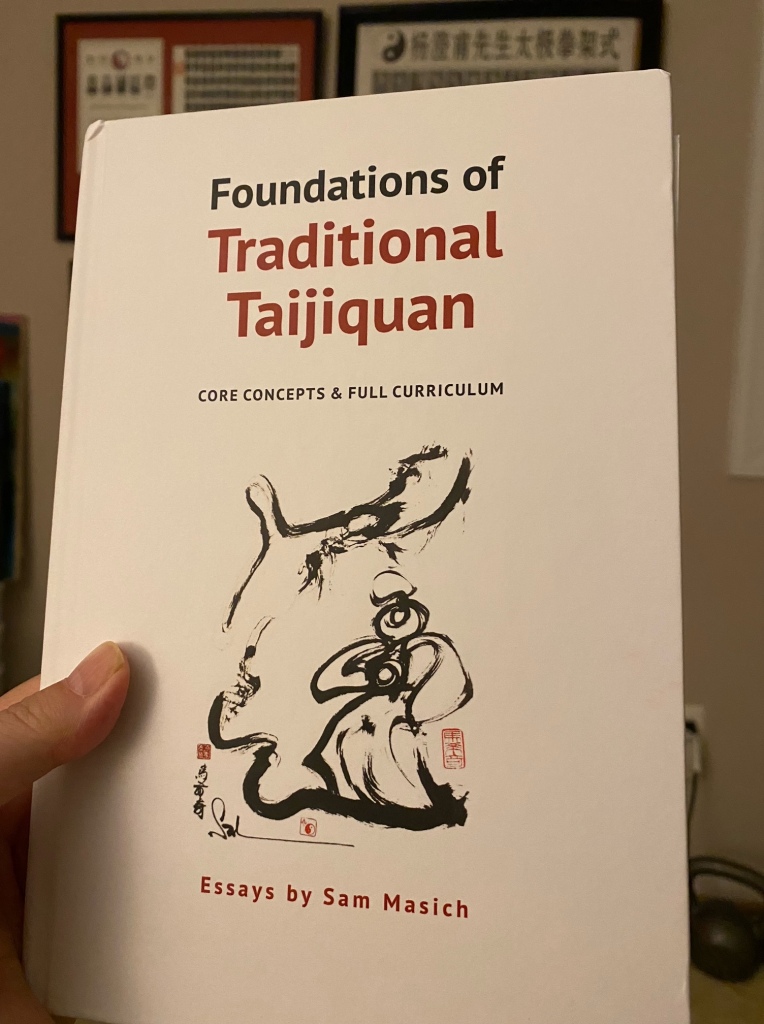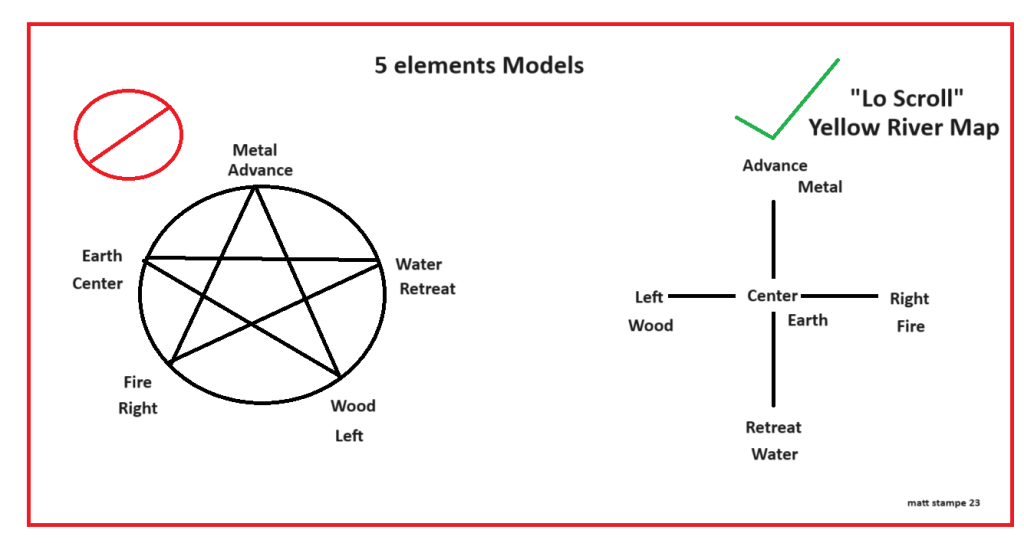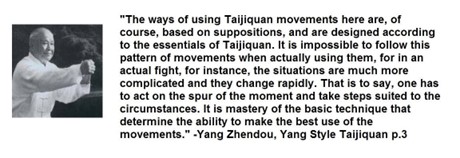Foundations of Traditional Taijiquan core concepts and full curriculum Essays by Sam Masich
Book review by Matthew Stampe, LA.c, LMT.

When Sam first sent an email announcing his book, I ordered it right away without hesitation. I’ve done seminars with Sam in the early 90’s in the ‘A Taste of China All-Taijiquan Championships” competition back in the day. I know he is a real contributor to the Tai Chi martial arts and self cultivation community, and knew he will have good insights to share. Sam has been a competitor in forms, weapons, push hands, and even full contact and stands out on his own. The book starts out with forwards from reputable people like Liang Shouyu, Nick Gracenin, Chen Zhonghua, and Yang Jun.
The book is well written and full of great use of the Chinese characters, pinyin and English. This is critical and Sam works hard to try to explain these in detail in his book without getting overly philosophical and without excess amount of talking on a particular subject. The reading was easy and kept me interested. He brings up good questions and observations into ‘what is Traditional Yang Taijiquan?’. He brings up various ideas about Yang Family vs Yang style and what is and is not in the curriculum of Yang family and what others of Yang style might be doing.
The heart and soul of the book is the 13 powers which are the 8 gates (Bamen) and 5 stances (Wu bu).The next main area he discusses are the 4 square and 4 corner methods (Sizheng Si yu Li Lun) , deep sticking passages (Shenjin Zhan nian Zeshu), and finally the importance of hips and waist.
There were some good discussions on the 8 energies and introduces a change of “An” commonly known “Push” is better translated as “press”. “Ji” commonly known as “press” is better translated as “squeeze”. He goes into discussion about the Bamen and Wubu.
One area of confusion or hard to understand was the 5 elements using the model here in the first image. I am putting the “Lo scroll” image second as I think it helps me better understand the 5 stepping better. The stepping discussion was a bit complicated, and I felt that when it comes to stepping, as a martial artist, not to get overly wrapped up in generating and overcoming cycles of the 5 elements. It is more natural to change stepping based on situation and not over think it. Returning to the model he used for 5 elements, I feel the Lo scroll is a better model and represents the person from a bird eye view. The person is in the middle and can advance forward, back, gaze left, look right, etc. These are just my opinions and thoughts that came up when reading the book.

Same goes for the 88 two man set vs real combat. The 88 two man set while it can help you learn to step and move, stick and change with opponent, and show possibilities of posture applications, but it is also contrived and does not account for the chaos of real combat. Let’s take a look at this statement from Yang Zhenduo to get to what I am saying:

I think this is the main reason why the 88 two man set is not in many of the Yang Family systems like Fu Zhongwen’s curriculum for instance.
In regards to the full curriculum theme, not much was talked about in regards to Tai Chi fast forms. This is also a controversial area as to whether there really is a second form like that of the Chen family. The Wu style of Wu Quanyu does have a second fast from in which they said it was learned from Yang family. Yang Shaohao is mentioned in the book as to teaching 3 forms “Upright path’, ’Family hand’, and ‘Small hand’. No mention of Tung family form or the Fajing practices Fu Zhongwen often demonstrated.
The meat and potatoes of the book centers around the 4 square (Si zheng) 4 corners (Si Yu), deep sticking (Zhan-nian), an understanding hips and waist (Zhengque Lijie Kua yao). He rearranges the bagua trigrams to match his understanding of the 8 powers. In regard to si zheng or 4 square, the reader will get some nice discussion on how important this is not only for martial skill for deep sticking (zhan-nian jin), but talks about how this helps us to be better ‘upright’ humans and the path to Dong jin (understanding jin) and shen ming (spirit illumination). Si Yu or 4 corners he mentions helps in the event of deficiencies in Si zheng. Using Si zheng and Si yu as a means for personal self-control and letting go of tension. Buzheng is talked about as well, it is the opposite of being an upright human, that is being a push hands jerk that likes to grab, clench, and try to over power, it is corrected by going back and reviewing Si zheng and Si Yu.
Deep sticking chapter in a nutshell is necessary for Dong jin, understanding perceptual movement. There really is no other way. Stick, adhere, connect, and follow (Zhan, Lian, nian, sui) teaches us not to do the 4 defects of reaching, skewing, losing, and resisting (ding, pian, diu, kang). In a Nancy Reagan-esq kind-a-way he says, “Just say No!” to the 4 defects and the buzhong attitude, and just say yes to Su Zheng and Su Yu as the correction to the defects and deep sticking. While he mentioned all these important ideas to be a good push hands player, in both with working with teachers and classmates, or in push hands tournaments, I felt it lacked some practicality in the event of full contact or fighting against other styles. For example, a person of boxing, or muay thai is not going to care if you used hard force on them, but a tai chi judge might flag you (Tai chi player) for excessive force for pushing the opponent without proper connection. That sort-of-thing crossed my mind. All these details of proper structure and technique in a real-world situation might not matter. However, if you train correctly and hard, the possibility is higher the right reflex and response will come out. Depends on how you train and what for. Personally, I won’t be thinking of ‘am I doing tai chi properly?’ in a fight, but maybe more so at push hands in the park.
Understanding the hips and waist was the longest and most detailed chapter because it supports deep sticking. The hip track, waist, and hip track and waist dynamic are talked in detail. He will discuss the inguinal fold, perineum/hui yin, weilu, crotch/dang, and hip crease, rooting and moving through the stances, channeling the upper body through the kua and legs, Yao, dan tien, ming men, ect. He brings up the topic of “Obstructive Behaviors” on a physical and psychological level. Physically these are bracing, clenching, twisting, torquing, etc. and psychologically they are rooted in deep subconscious fears, habits, and need to control. He gives a dozen suggestions on how to fix these including being natural, having self-awareness, self-criticism, breathing, investing in loss, etc.
In regard to Full Curriculum, Sam goes into discussing some of his program MIAM (Masich Internal arts method). Here he discusses the Yang family vs Yang style and other Yang “things” people are doing. Again the 88 two man san shou set is discussed and the Yang Baduajin set. These are things that Tian Zhaolin was well known for. Are they recognized by the Yang Family? They certainly are not practiced for instance in the Yang Family Association, but students of Yang family have passed these on and Sam feels they are important aspects of the art that can help practitioners. I myself have been to schools that did these things and they can be useful for students. He models his program somewhat from the Chen in the aspect of using Zhang Zhuang, Chan su jin, Forms, push hands, application, and weapons. His program centers around the following and he will talk about it in more detail. Basic summary:
- Foundation in things like flexibility, conditioning, yang baduanjin, neigong: post and preheaven methods, zhan Zhuang.
- Yang silk training, 37 single forms, 108 form.
- Push hands: sensing, 8 disc frame, 13 powers, wub u, 4 square fixed and moving, da lu, 4 square-8 reversal.
- Barehand applications: 37 practical applications, Da shou, and the 88 two man set
- Taiji Dagger: 13 powers, , 8 partner drills, 5 phase dao, 4 square dao, 4 corner dao, 13 method short knife.
- Taiji Sabre: 13 power saber, 32 saber, applications, 5 phases, 4 square, 4 corner.
- Straight sword- 54 sword form, sword sensing, 5 phases, 4 square, and 4 corner.
- Taiji Spear, 13 powers, 5 phases, 4 square, and 4 corners.
- Auxillary: study of Taiji classics, 40 chapters, yijinjing, Dao de ching, Taiji kinetics, tui-na, and Ashi acupuncture. He feels Baguazhang and Xingyiquan also have something to offer.
This book is a must have for all Taijiquan players who want to deepen their understanding of the 13 powers and add to their library. Sam’s work is much needed as Tai Chi as a martial art and self cultivation practice is in a current state of decline. He thinks “outside of the box”, bringing the art back to its original basics. In a world rife with shady tai chi salesmen and woo-woo pre-madonnas, that have arisen in the age of youtube and social media, Sam brings a refreshing sense of traditional values, real world knowledge, and practicality back to the people.
Sam has a unique teaching style and has been around for a very long time as a competitor in forms, push hands, and free fighting. He has been very productive in the martial arts community as a coach and judge. His list of teachers is pretty wide ranging from Dr. Yang Jwing-Ming, Liang Shouyu, Yang Zhenduo, Yang Jun, and most importantly Brien Gallagher, his connection to Raymond Y.M. Chung. His book also has forwards and support by many in the Taijiquan community.

Dear Matt, Thanks very much for the thorough review and recommendation of Sam’s book. I’ll check it out. Best regards,Russ Mason
LikeLike
Thanks for the comprehensive review. Definitely, think need to get this. Are there any must haves that you would recommend? I’m new to taichi and looking to build ny library. Thanks
LikeLike
Senior students of the Yang Family practice have wondered why YCF did not practice or teach the baduanjin. The modern Family itself deny it. Nevertheless, a small few very senior apprentices were taught the practice and in turn taught it themselves to their closest apprentices. The standing exercises were popularized in the early 1970s such that now many practice them today. Practitioners of early tcc did it differently. The baduanjin seen demonstrated online by students of Mr. Masich, in fact, demonstrate his version. It varies from the original version. A version seen online from China was demonstrated by a student of Mr. Yao. Yao knew it of course, however, his student possibly deliberately changed what he demonstrated for that occasion. An original version was taught by Great Master Yang Shaohou to an apprentice who later needed to relocate to Indonesia for survival after the upheaval of 1949. Descendents of that fellow do that original version quietly there and a practice brother of Mr. Yao quietly here.
LikeLiked by 1 person